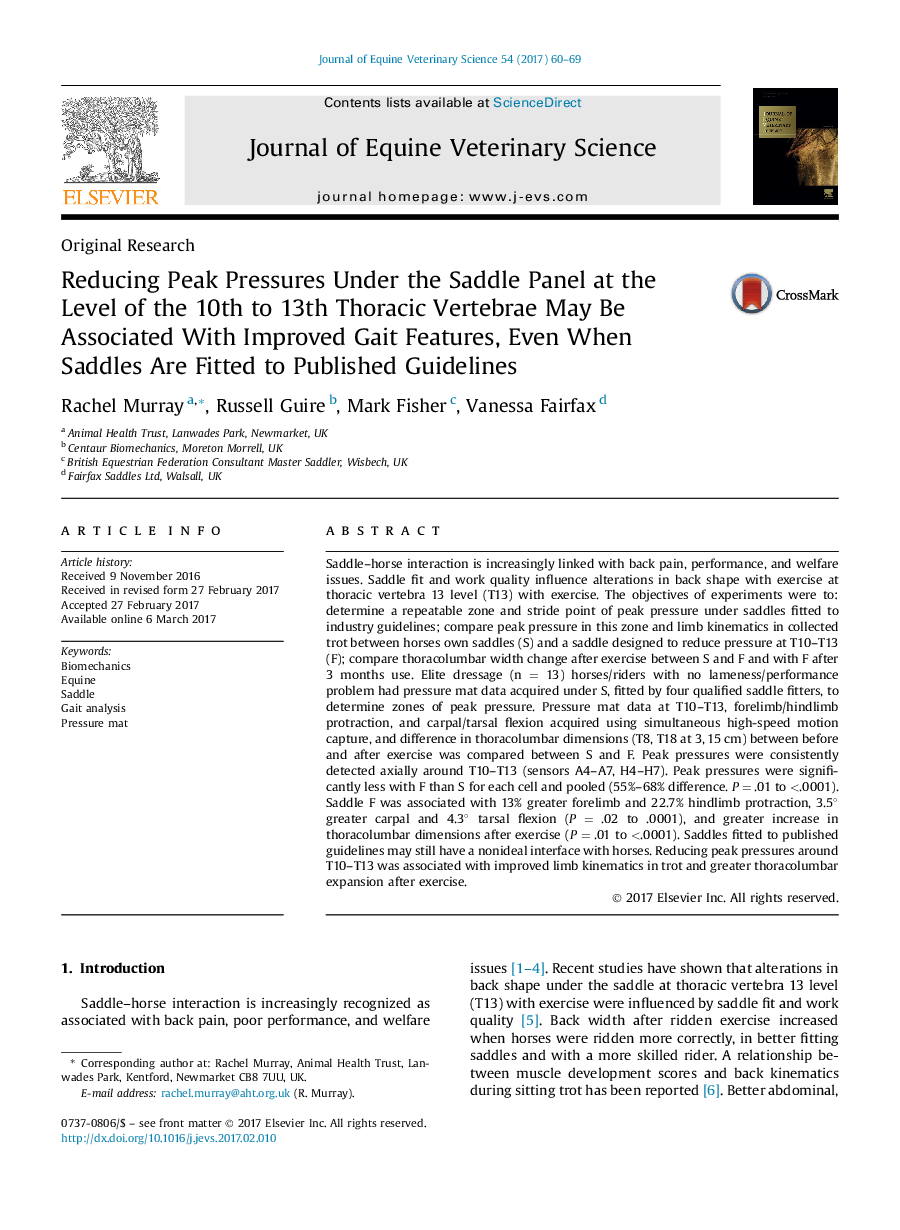| Article ID | Journal | Published Year | Pages | File Type |
|---|---|---|---|---|
| 5535621 | Journal of Equine Veterinary Science | 2017 | 10 Pages |
â¢Saddles fitted to industry guidelines had a repeatable peak pressure zone at T10-13.â¢Peak pressures occurred on the contralateral side at 75% of forelimb stance.â¢Peak pressures at T10-13 were reduced by a saddle designed to reduce peak pressures.â¢Altered saddle design led to greater carpal/tarsal flexion and limb protraction.â¢Altered saddle design led to more increase in thoracolumbar width after exercise.
Saddle-horse interaction is increasingly linked with back pain, performance, and welfare issues. Saddle fit and work quality influence alterations in back shape with exercise at thoracic vertebra 13 level (T13) with exercise. The objectives of experiments were to: determine a repeatable zone and stride point of peak pressure under saddles fitted to industry guidelines; compare peak pressure in this zone and limb kinematics in collected trot between horses own saddles (S) and a saddle designed to reduce pressure at T10-T13 (F); compare thoracolumbar width change after exercise between S and F and with F after 3 months use. Elite dressage (n = 13) horses/riders with no lameness/performance problem had pressure mat data acquired under S, fitted by four qualified saddle fitters, to determine zones of peak pressure. Pressure mat data at T10-T13, forelimb/hindlimb protraction, and carpal/tarsal flexion acquired using simultaneous high-speed motion capture, and difference in thoracolumbar dimensions (T8, T18 at 3, 15 cm) between before and after exercise was compared between S and F. Peak pressures were consistently detected axially around T10-T13 (sensors A4-A7, H4-H7). Peak pressures were significantly less with F than S for each cell and pooled (55%-68% difference. P = .01 to <.0001). Saddle F was associated with 13% greater forelimb and 22.7% hindlimb protraction, 3.5° greater carpal and 4.3° tarsal flexion (P = .02 to .0001), and greater increase in thoracolumbar dimensions after exercise (P = .01 to <.0001). Saddles fitted to published guidelines may still have a nonideal interface with horses. Reducing peak pressures around T10-T13 was associated with improved limb kinematics in trot and greater thoracolumbar expansion after exercise.
